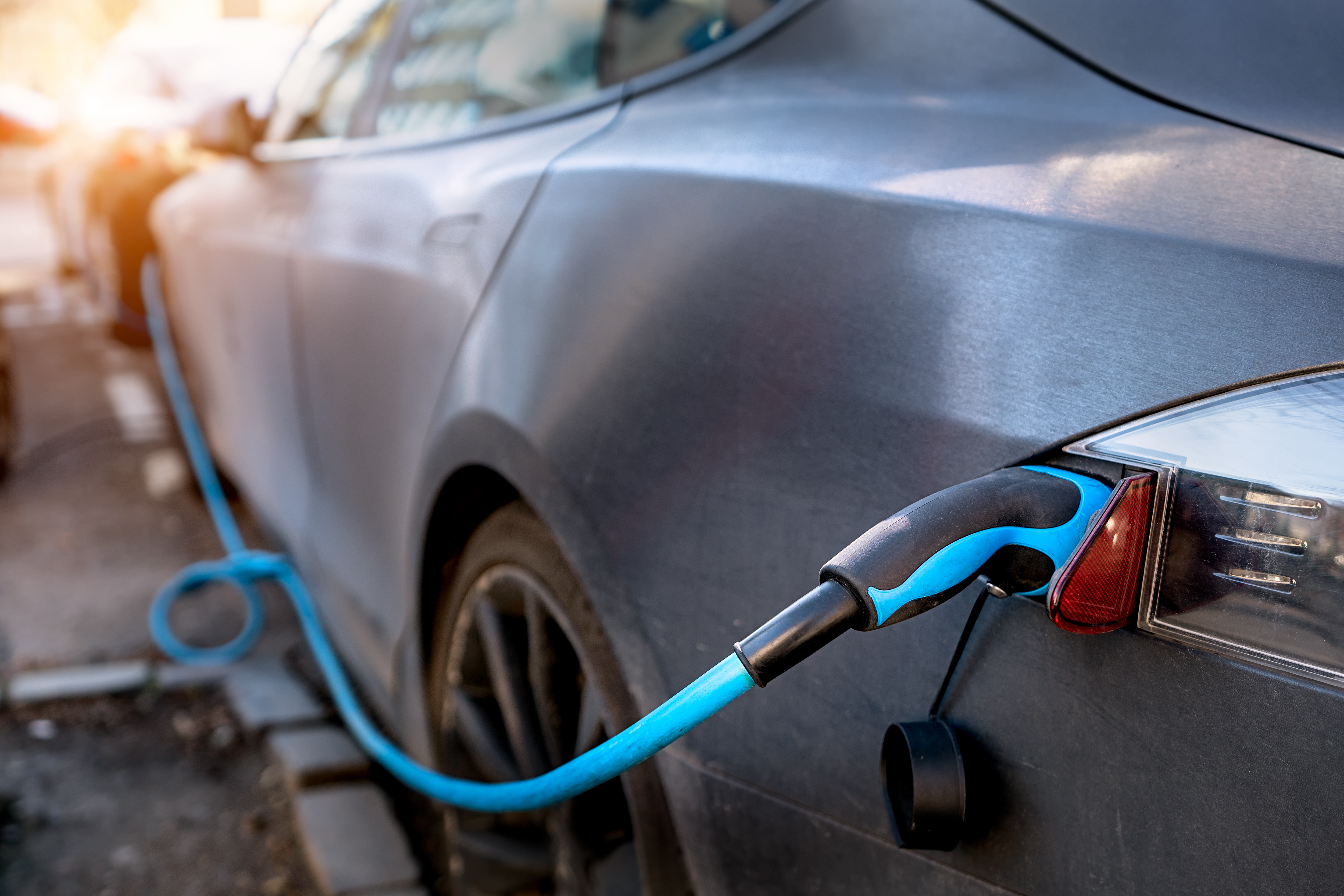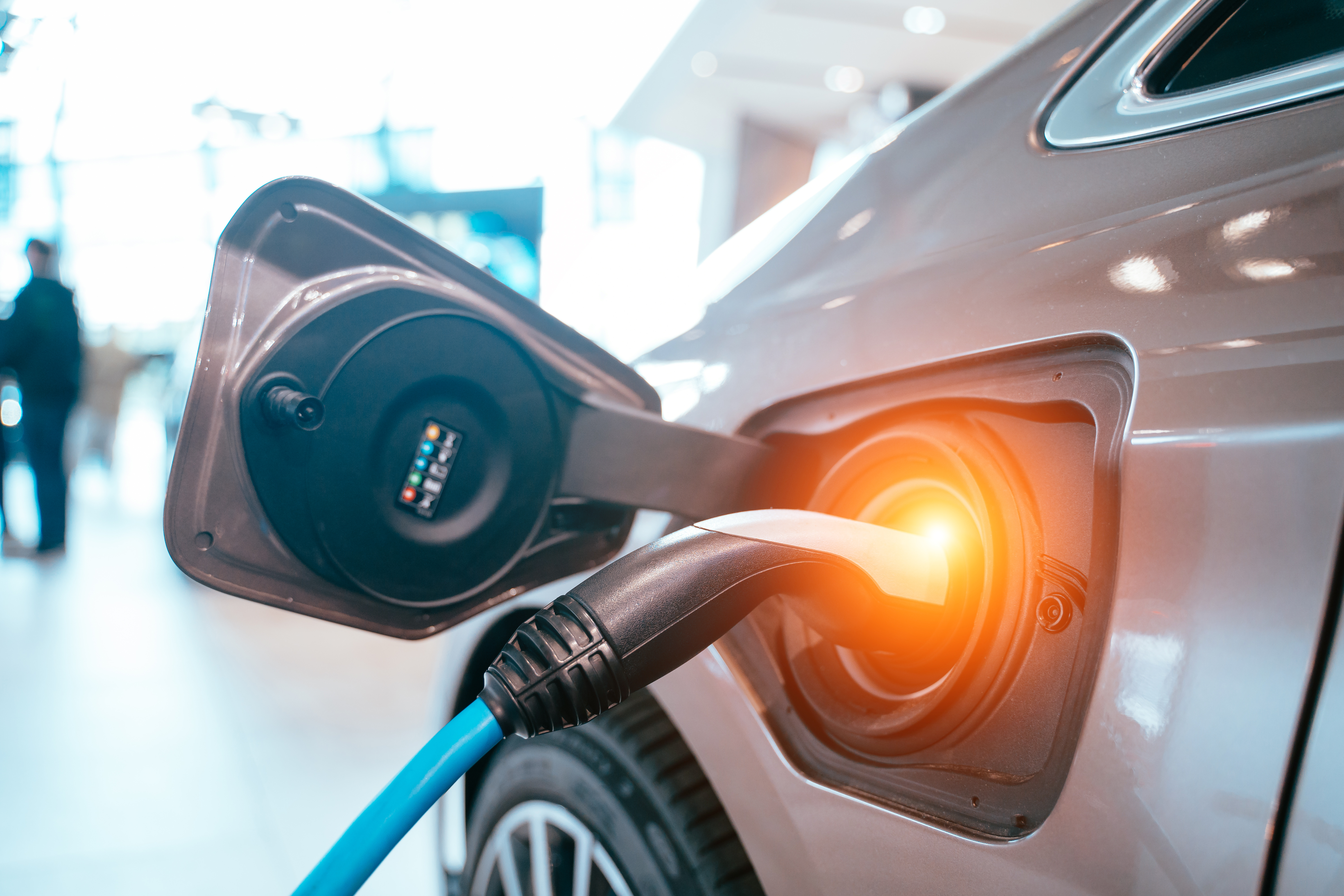
While EVs have existed for years, the increased emphasis on this potentially transformative technology will have exciting and significant impacts to Wisconsin's economy, workforce, and transportation system in the years to come.
WisDOT's mission is to provide leadership in the development and operation of a safe and efficient transportation system. As EVs continue to alter the status quo of the transportation system, WisDOT will continue to collaborate with government, industry, and the public to create innovative transportation solutions that meet the needs of our state and contribute to the health and well-being of our communities.
"Electrification is coming. The private sector has spoken. The major auto manufacturers are retooling and have announced ambitious plans to transition to producing predominantly electric vehicles in the near future. That is good for our environment because it can dramatically reduce emission from burning fossil fuels. We, in the public sector, need to be ready for this transformational change - and in Wisconsin, we will be. That is why WisDOT is continuing to work with our partners to enhance Wisconsin's EV infrastructure and make benefits of EVs available to everyone in Wisconsin."
- Secretary Craig Thompson
Wisconsin has received approval from the U.S. Federal Highway Administration (FHWA) for its plan to expand its electric vehicle charging stations under the National Electric Vehicle Infrastructure (NEVI) program. This webpage will be updated with more information about the program as it becomes available.
Each fiscal year, Wisconsin will be required to submit an update to the previous year's NEVI plan. On September 29, 2023, Wisconsin was notified by FHWA that the 2023 plan update had been approved. Below is the approved 2023 plan update, along with the plan submitted and approved in 2022.
Approved 2023 Wisconsin Electric Vehicle Charging Infrastructure Plan Update
(This document contains alternative text describing images, charts, diagrams, and other elements. To utilize this feature, download the document to your computer and open it in Adobe Acrobat Reader.)
2022 Wisconsin Electric Vehicle Charging Infrastructure Plan
Try our interactive map!
WisDOT has created an
interactive map for you to identify and comment on eligible areas for deployment of EV charging equipment. This easy-to-use map gives you the opportunity to comment on specific sites, provide general feedback and include contact details if a WisDOT response is desired.
EVs are designed to run on electricity generated through an EV battery, eliminating the need for gasoline. They are energy efficient, environmentally friendly, require less maintenance than internal combustion engines (ICE) and run quietly.
Most EVs are able to travel more than 150 miles on a single charge and some can travel 200 to 300 miles or more. A number of factors impact range of battery charge including battery type and ambient temperature as cold weather greatly decreases range. EV battery design efforts continue to create more efficient options for consumers, allowing more miles per charge and faster charging than ever before.
According to respected national research firms, EVs are expected to comprise over half of all passenger vehicles sold in the United States by 2040, increasing the need for Electric Vehicle Charging Stations (EVCS) across the state. The Wisconsin DMV reports that in calendar year 2022, 8,158 electric passenger vehicles in addition to electric cycles and autocycles were registered in the state. An additional 5,573 electric trucks were registered totaling 13,731 total registered electric vehicles.
Hybrid Vehicles
Currently, available hybrid vehicles run on both electricity and gasoline. There are two kinds of hybrid vehicles, plug in hybrids and hybrid vehicles. Plug in hybrids (PHEV) first run on battery power, and gasoline second. Hybrid vehicles run first on gasoline and then on electricity second. Both offer some benefits of full electric vehicles including reduced tailpipe emissions and energy efficiency.
Medium- and Heavy-duty Electric Vehicles
In addition to EV passenger vehicles (light-duty vehicles), market demand for medium- and heavy-duty EVs is growing. Communities are turning to electric as an option for their bus fleets, replacing diesel counterparts. Truck fleets are also considering more electric options as viable alternative fuel sources for their fleets. The transition of medium- and heavy-duty fleets to electric vehicles would potentially offer numerous benefits including reduced tailpipe emissions. Medium- and heavy-duty fleet conversions can include additional challenges such as cost, availability, and long-distance battery range.
Wisconsin's existing EVCS network is primarily privately owned. To see where EVCS are currently located, refer to the
WisDOT Alternative Fuels webpage or the
U.S. Department of Energy EVCS locator.
There are three levels of EV chargers.

Level 1 Charger

Level 2 Charger

Level 3/DC Fast Charger
| Level 1 | 2-5 miles of range per hour of charging | Most commonly located in homes of hybrid vehicle owners. Due to the slow charge pace, many EV owners opt for a Level 2 Chargers |
| Level 2 | 10-20 miles of range per hour of charging | Most commonly located in homes, workplaces, and other public charging locations where a vehicle would be parked for a few hours. |
| Level 3/Direct Current (DC) Fast Charger/Super Charger | 60-80 miles of range in 20 minutes of charging | Fastest form of charging currently available, offering the greatest traveling distance in the shortest amount of charging time, and as a result, is a popular choice to place in public locations. |
Battery charge time is primarily influenced by type of battery and level of remaining charge.
Two connectors for EVs are now receiving much attention: the CCS, or Combined Charging System, and the North American Charging Standard (NACS). CCS is a connector that can supply between 25 kWh and 350 kWh of power and charge an EV in under one hour. The NACS connector is an alternative to the CCS. It is smaller and lighter than the CCS, delivering up to 250 kWh of power, and can recharge an EV battery in under an hour. Most automakers have announced the integration of the NACS charge port in their future EV production. Given the recent industry focus on the NACS connector, WisDOT is evaluating options to support NACS connectors alongside required CCS connectors at future NEVI-supported charging stations.

CCS Connector (Combined Charging System)

NACS Connector (North American Charging Standard)
Currently, locations and placement of EVSE are determined by private businesses and landowners. Local governments are adding charging infrastructure to promote economic development and tourism within their communities.
For EV charging stations installed through the WEVI Plan, it is anticipated that federal National Electric Vehicle Infrastructure (NEVI) Program funds will be made available to local governments and private entities, working collaboratively to install and operate EV fast charger systems along designated corridors. Chapter 4 of the WEVI Plan details Wisconsin's approach to preferred EVSE placement along designated AFCs. This placement is specific to the WEVI Plan and does not impact privately funded EVSE.
As the build-out of designated AFCs are certified as complete by the U.S. Secretary of Transportation, other Wisconsin transportation corridors may be included for WEVI Plan funds, providing services in rural and underserved areas of the state.
In November 2021, the Bipartisan Infrastructure Law was signed, designating $7.5 billion to building out a national network of electric vehicle charging stations. The National Electric Vehicle Infrastructure (NEVI) Program lays the groundwork for formula funding designation and use.
NEVI is specifically intended to build out the electric vehicle charging system along federally designated Alternative Fuel Corridors (AFCs). Currently, in Wisconsin these include five Interstates: I-90, I-94, I-43, I-41, and I-535; seven U.S. highways: US 53, US 151, parts of US 51, US 2 and US 141, and all of US 8 and US 41; one state highway: WIS 29.

The 2022 Wisconsin Electric Vehicle Infrastructure (WEVI) Plan was approved on September 14, 2022. As required by NEVI guidelines, an updated plan for 2023 was submitted to FHWA. FHWA approved the update on September 29, 2023. Wisconsin is eligible to receive approximately $78 million in NEVI formula funds over five years beginning in federal fiscal year 2023.
Initial guidance for NEVI Program was received from FWHA in February of 2022, and in February of 2023, the final rule that set standards and requirements for projects under the Program was received. WisDOT is now reviewing all available application and contracting mechanisms and approaches to meet federal requirements for funding EV-related projects.

The department's goal is to provide leadership in adapting the state's transportation infrastructure to provide seamless short- and long-distance EV travel in Wisconsin. The department will work to develop preferred statutory and regulatory framework for transportation electrification. Efforts will focus on continued stakeholder collaboration, equity of integration across the state including urban, rural, suburban areas, and historically underserved communities as well as adapting the state's transportation infrastructure to advance electrified transportation.
Key to meeting these goals is:
-
Education, outreach, and collaboration: Collaborating with and listening to internal and external stakeholders including government, industry, and the traveling public.
-
Stewardship: Focus on strategic investments to maximize available funding and meet state needs.
-
Data-Driven Approach: Applying a data-driven approach to electrification deployment statewide.
The following timeline summarizes the WEVI Plan process.

WisDOT is collaborating on transportation electrification with key stakeholders such as utilities, metropolitan planning organizations, regional planning commissions, labor and workforce, freight and logistics companies, and many others, including ongoing opportunities for public input. The department has established the following five objectives for public engagement:
- Identify and involve key stakeholder groups in the plan’s development
- Engage the public on preferred electric vehicle charging station locations, charging preferences, costs and future use of EVs
- Engage stakeholders to ensure EV charging infrastructure achieves equitable and fair distribution
- Ensure public participation opportunities are performed to facilitate an inclusive audience and accessibility
- Establish continuous public participation opportunities throughout the five-year EVSE infrastructure deployments
Below is a list of past and projected stakeholder outreach activities and key events regarding the WEVI Plan:
2023 Activities/Events:
- Ongoing stakeholder communication and public input participating in over
ten public presentations and over
50 one-on-one stakeholder meetings
- As detailed in the WEVI 2023 plan update, conducted a gap analysis to determine which stakeholder industries and categories were not widely engaged during the development of the WEVI 2022 plan. This gap analysis helped guide engagement activities for the rest of the year.
- Development of program implementation options and WEVI application materials and procedures in accordance with NEVI Program rules issued by the Federal Highway Administration on February 15.
- Program monitored for reporting purposes and updating of WEVI Plan.
2022 Activities/Events:
March/April
- Meetings with planning partners, utilities, electric vehicle charging companies and labor and workforce representatives
May
- Meetings with planning partners such as local governments, RPCs, etc.
- Stakeholder webinar:
May 26
June
July
- Ongoing stakeholder communication, public comment period (July 14-July 24, 2022) and plan submission.
August - September
- Ongoing stakeholder communication and public input. State plan submitted and approved on September 14.
WisDOT Resources
- The Division of Motor Vehicles (DMV) publishes annual reports detailing vehicle registrations, including a report (#25) by fuel type and county. Find them at the link below.
Wisconsin DMV Vehicle Information Reports - The DMV is responsible for the collection of motor vehicle fuel surcharges. To learn more about the surcharges, visit the link below.
Wisconsin DMV Fuel Surcharge - To learn more about other alternative fuel sources, visit the link below.
Alternative Fuel sources
State of Wisconsin Resources
- Visit the link below for the Public Service Commission of Wisconsin's page on EVs.
Public Service Commission - In August 2019, Governor Evers issued Executive Order #38 which ordered the creation of the Office of Sustainability and Clean Energy (OSCE). OSCE leads the State of Wisconsin in addressing the effects of climate change through programs and policies that support the use of clean energy resources and technology. To learn more about OSCE, visit their website linked below.
Wisconsin Department of Administration, Office of Sustainability and Clean Energy - In October 2019, Governor Evers issued Executive Order #52 to establish the Governor's Taskforce on Climate Change. The Taskforce worked to develop the report linked below, presented to the Governor in October 2020.
Governor's Taskforce on Climate Change Report
Federal Government Resources
Contact
Wisconsin Department of Transportation
Division of Budget and Strategic Initiatives
transportationelectrification@dot.wi.gov